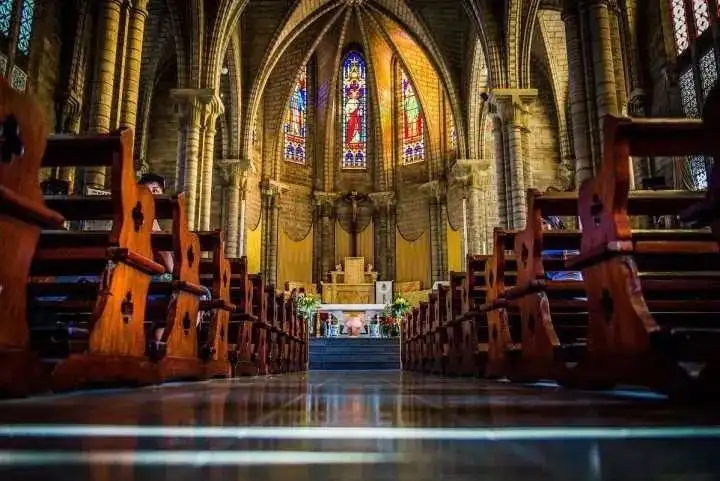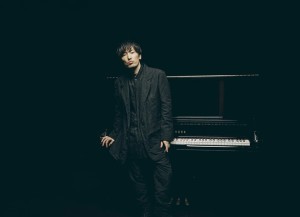Why Do You Feel Like Crying in a Church?
Why is it that hearing hymns, masses, or sacred music in a church often stirs emotions so deeply that tears begin to well up? What is it about these musical moments that reach us so profoundly?
Let’s first explore the sound environment within churches.
Romantic composers often viewed music as a pure emotional outpouring—a form of spiritual dialogue between the composer and the heavens. We might imagine the creative process as something mystical:
A solitary composer, perhaps a bit eccentric, sits at a worn piano, candlelight flickering beside him. With one hand on the keys and the other scribbling piano notes with a quill, he channels something divine. The music emerges from his soul, untouched by rules or limitations.
This romantic image has become our ideal of musical genius.

But reality is sometimes less spontaneous and more situational. Often, composers adapt their work instinctively to suit a space or cultural context.
Take, for instance, percussion performances in tribal or folk traditions.

These performances are typically held outdoors, where sound can dissipate naturally. The instruments—made of wood, skins, or bamboo—may seem shaped by availability, but in fact, they’re finely tuned to their environment.
The sound of these instruments fits the space. They resonate with the surroundings. They don’t overwhelm or clash with the natural acoustics—they complement them. The structure of the music evolves in harmony with where it is played.
But what if this music were brought into a stadium or a cathedral?
With four-second echoes and vast stone walls, the same rhythms that sound crisp outdoors would become an indistinct roar. Drums would blur, melodies would become disjointed, and instead of spiritual elevation, we’d experience confusion.

Churches are designed with acoustics in mind—reminiscent of ancient caves, as mythologist Joseph Campbell observed. These are the spaces where early humans sang and worshipped, and their echoes became part of the experience.
In such settings, fast rhythms and dramatic harmonic shifts don’t work well. But long, sustained tones, minimal key changes, and slow-moving melodies are perfect. This is why early church composers developed a style that we now see in classical sheet music: a serene, meditative form known as the church modes.

This music wasn’t written just from emotion—it was crafted to bloom within a sacred space.
Slow tempos, modal melodies, and simple intervals filled the vastness of cathedrals with warmth and clarity. In this way, early sacred compositions were acoustically reverse-engineered to unlock the spiritual response of those listening.
This connection isn’t lost on modern listeners. Whether you're singing from easy sheet music or playing ancient hymns in piano online lessons, you may still feel that same emotional pull. It’s not just nostalgia or faith—it’s the architecture of sound.

Choral music, in particular, has a trance-like power. Layers of voices create emotional swells that seem to bypass logic and speak directly to the subconscious. The effect can be so powerful that even non-believers have found themselves moved to tears.
Of course, psychological interpretations are possible. Perhaps it’s association, perhaps it’s memory. But more often, it’s the music itself that becomes the key—one that unlocks a deeply personal and ancient emotional space.
Let’s also dispel a common myth: that medieval composers simply lacked the skills to create complex harmony.
In fact, complex harmony would have sounded terrible in cathedrals. The long reverberations of church interiors blur dense textures. Simple monophony wasn't due to limitation—it was the intelligent musical choice. And this is reflected in much of the classical sheet music passed down from that era.
So the next time a piece moves you in a church, remember: it’s not just your heart responding. It’s the music, the space, and your very biology all aligning in perfect harmony.
FAQs
Q1: Why does sacred music feel more emotional in a church than elsewhere?
A: Churches amplify and sustain sound in a unique way. When combined with the slow-moving melodies of sacred classical sheet music, this acoustics-enhanced experience often triggers deep emotional responses.
Q2: Can I recreate the same effect at home with digital instruments or online lessons?
A: While modern setups like piano online lessons can offer emotional experiences, the reverberant acoustics of a cathedral are hard to replicate. However, playing from easy sheet music in a quiet room can still bring meaningful emotion.
Q3: Is it okay to learn sacred or modal music through simplified versions?
A: Absolutely. Using easy sheet music or simplified piano notes is a great way to understand the structure and feel of this music. As your skills grow, you can transition to more complex arrangements.












